Today, we’re going to show you one of our favorite software features in action.
“Route optimization API.”
Specifically, we’ll show you how our users rely on eLogii’s API to leverage the full potential of route planning automation.
And how integrating with route optimization APIs raises the efficiency of their operations.
Let’s dive right in.
What Is Route Optimization API?
Route optimization API is a way to connect route optimization software to other software. This allows you to get access to routing capabilities like driver tracking, or data like delivery updates on another app, while the routing software can use functions and data related to orders, inventory, vehicles, and customers.
Why Is Integration with Route Optimization API Important?
We’re not going to throw random stats at you.
But we do want to briefly show you a few fascinating statistics that highlight just how huge routing APIs are for delivery businesses.
API integration contributes 63% directly to revenue growth. (Rapid API)

Implementing APIs increases workforce productivity by 29%. (MuleSoft)

Businesses that use APIs see a 20% increase in customer satisfaction. (NewRelic)

So it’s clear that APIs have a huge impact on profit. Add to that the guaranteed 265% ROI of route optimization software:

And there’s a good chance that the time, money, and effort you spend now will pay off quicker than anything else you do this year.
How Do Route Optimization APIs Work?
At the base level route optimization APIs integrate like any other software.
When you want to use a certain function, the API allows you to use that function in or out of the software.
What makes routing APIs unique is that you can connect route optimization software to other systems to automate your delivery planning operations.
In fact, you can integrate functions and data sets including:
- Task Information
- Customer Info
- Route Plans & Information
- Vehicle Information
- Delivery Zones
- Optimization Parameters
- And more
While using webhooks, you can provide access to a variety of data. This includes:
- Delivery Progress
- Delivery Status
- Delivery Tracking Update
- Driver Tracking Update
- Route ETAs Update
- And more
What Software Can You Integrate Using Route Optimization API?
Route optimization API lets you connect to virtually any type of software used for delivery planning and management. This includes:
Custom Software
- Your custom software
- Your custom online platform
- Your custom website
- Your custom application
Order Management Systems (OMS)

Ecommerce Platforms

Warehouse Management Systems (WMS)

Telematics Systems

Enterprise Resource Planning (ERP) Systems

Customer Relationship Management (CRM) Software

How Businesses Use Route Optimization APIs to Automate the Way They Manage Operations (And Increase Efficiency)
We just showed you how well the route optimization API works.
And the different types of software you can integrate with.
Now it’s time to reveal how you’ll use it in your day-to-day operations.
Let’s say you’re looking for an enterprise-grade route planning solution.
And you come across a SaaS solution like eLogii:
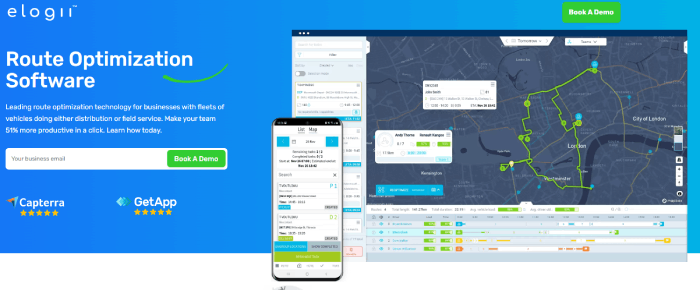
But you already have an Enterprise Resource Planning (ERP) system.
And you use it to manage day-to-day business activities, from accounting to supply chain management. A solution like Oracle or NetSuit, for example.
You already manage a lot of data related to your operations.
Why do you then need route optimization software?
Like most businesses with ERP systems, you probably have solid control over your resources. So you know exactly where and how you’re distributing them…
…but what you might lack is efficiency and how well you’re using those resources in the field.
That’s when you notice a HUGE opportunity staring you in the face:
If you can get visibility and control over field operations, be it delivery, distribution, transportation or field services, you can improve how efficiently you manage resources beyond your facilities.
In the words of one of our users:
“The extremely large set of parameters/settings that you can manage yourself provides good visibility over tasks/drivers/operators and a broad level of coverage of all logistic areas.”
After hours spent researching possible solutions, you subscribe to eLogii:
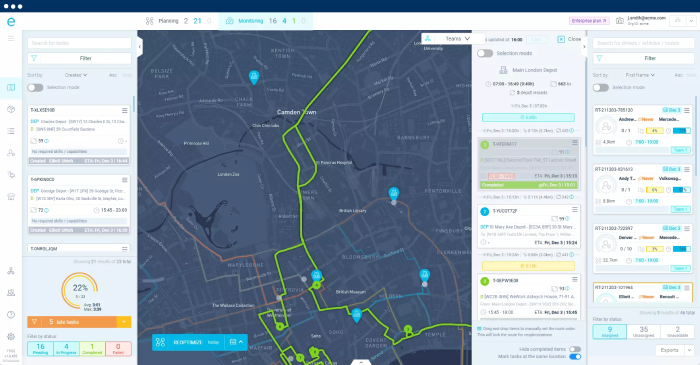
That’s the good news.
The bad news? Your ERP system isn’t integrated with eLogii. (Yet…)
That means the data related to your resources is disconnected from the routing data you now have access to.
Instead of having complete visibility over your entire operations, you have to switch between systems. And you’re left with two options:
Option #1: You can leave the two systems disconnected. And manually compare data to know what’s going on and how you’re using your resources. (Which isn’t efficient at all.)
Option #2: You can use eLogii’s route optimization API to connect to your ERP.
In doing so, you get full access to operational data across the board. And you can manage all of your activities and resources simultaneously and in real time.
Fortunately, you go with Option #2.
And how does it go?
Because your ERP is connected to eLogii via the route optimization API, the orders are automatically generated as tasks in the dashboard:
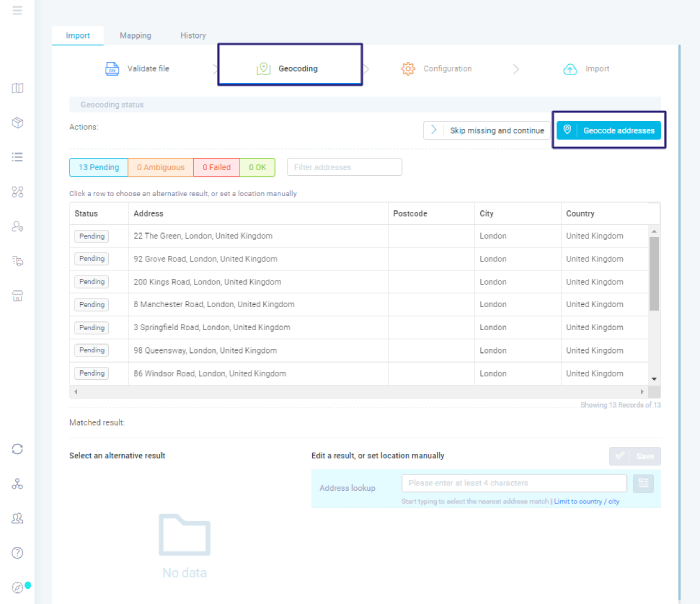
Once that’s done, you can go ahead and plan and optimize the routes for the tasks:
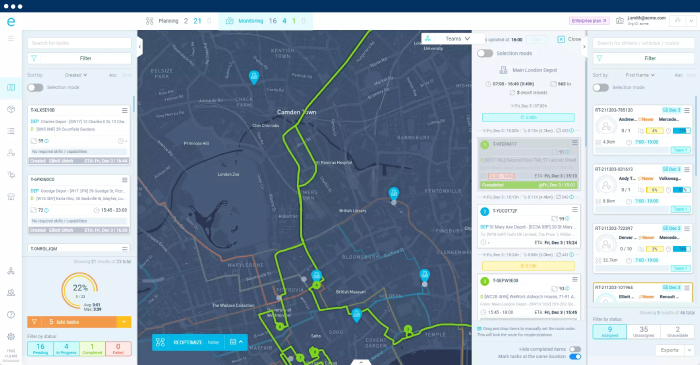
If you desire, this data can be synched back to the ERP. So you have full visibility in the app.
After eLogii generates the routes and schedules are locked into place, you can dispatch them to drivers using the driver app:
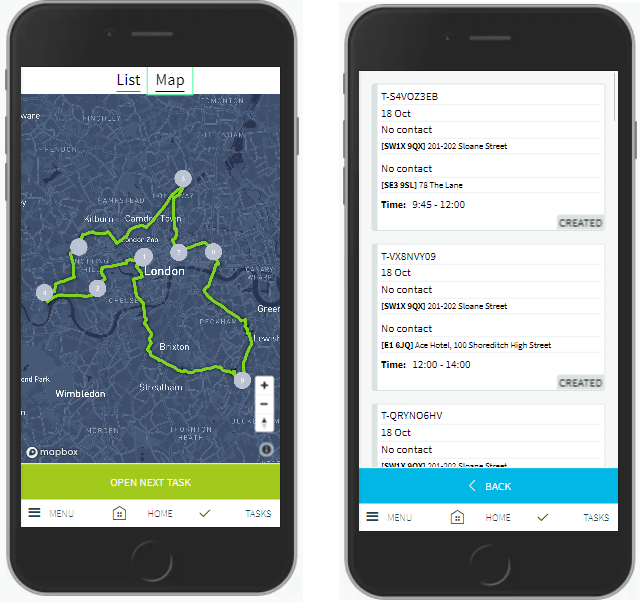
The drivers use the app to execute the orders. And collect additional data in the field, such as proof of delivery.
Of course, you may already have a driver app or a telematics system in place.
But because of the route optimization API you can use that app instead of ours.
In both cases, the status of each task or delivery is synched with eLogii, be it in progress, completed, failed, or anything else.
Which means it’s also synched with your ERP.
You can use webhooks to view the delivery status updates in real time on your ERP system.
On the other hand, if there are any changes to a task or order in the ERP, the API will automatically sync these changes dynamically with eLogii (including the driver app).
Now you have complete visibility over all activities from the moment a request is made.
You can also view and review all of the data related to how you use your resources.
Including historical data and analytics (for continuous optimization of your operations):

And because all your apps are integrated via API, it’s all in one place.
Which makes it at least 50% more efficient.
(Not counting the efficiency you’ve already generated by automating your operations.)
Not bad for a software solution in your toolkit.
With that out of the way, let’s take a look at why companies end up going with eLogii.
(99% of the time.)
Why Businesses Choose eLogii’s Route Optimization API?
Here’s the deal:
eLogii isn’t the only route optimization software.
In fact, there are 307 other similar tools listed on Capterra:

But not all of them offer API integration.
And of those that do, not many have a route optimization API that can compare with ours.
Which puts us at the top of the market.
And here’s exactly why that’s the case:
No Restrictions
When it comes to eLogii’s route optimization API, there are no restrictions to what software capabilities you can integrate. We’ve already mentioned this:
There are 70+ endpoints that you can integrate. These are grouped into:
- Task Information
- Customer Info
- Depot Locations
- Driver Profiles
- Driver Schedule Exceptions
- Route Plans & Information
- Route Template Groups
- Task Template Groups
- Vehicle Information
- Delivery Zones
- Optimization Parameters
Besides this, you can also set up a variety of webhooks:
- Task Lifecycle Update
(delivery progress)
- Task Update
(delivery status)
- Task Tracking Update
- Driver Tracking Update
- Optimization Complete
- Route ETAs Update
- Route Created
- Route Updated
- Route Completed
(all tasks completed)
- Route Removed
Which means that eLogii’s API covers the entire system.
And that’s what makes it highly flexible, customizable and desirable among our users.
Scalability
eLogii is an enterprise-grade solution. Which means engineered for maximum functionality.
In fact, our routing software has 95+ unique features:
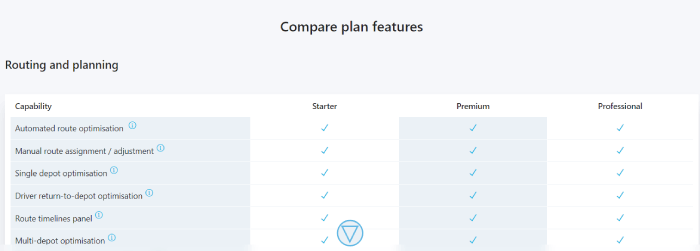
Another thing to keep in mind:
eLogii is a SaaS solution. That means you can scale it in pretty much any web environment.
And using the API to integrate it into your ecosystem enables you to elastically scale how much you rely on it.
That’s because it doesn’t depend on what you can plan, manage, and optimize.
It depends on:
- The operational efficiency you want to achieve
- The underlying strategies that direct business growth
- The demand for products and/or services that you want to meet
Which is in line with eLogii’s performance capabilities.
The platform allows you to:
- Plan and optimize 1,000+ multi-stop routes per day (or across multiple dates)
- Create and dispatch 10,000+ tasks per day (or across multiple dates)
- Manage an unlimited number of depot locations and delivery zones
- Manage an unlimited number of fleets and drivers
All of this makes eLogii guaranteed to scale with your business.
REST API
eLogii is organized around REST APIs.
It follows standard practices such as predictable, resource-based URLs.
And all requests are accepted over SSL and encoded as JSON.
In its simplest form, REST APIs follow this path:
- Your web-based application (API-enabled routing software)
- Remote server
- Data request
- Returned data/function
Generally, REST APIs are reserved for web-based services and applications.
In fact, 70% of public APIs are REST APIs.
That’s because they provide greater flexibility.
And they also work directly from a HTTP URL rather than relying on XML.
Plug and Play
eLogii’s API is created for quick deployment.
The engine can function independently.
The whole processes building the integration is a pretty straightforward four-step process:
Step #1: Download the extensive API documentation.

Step #2: Contact eLogii’s developers at support@elogii.com.
Step #3: Get the API key from the dashboard.
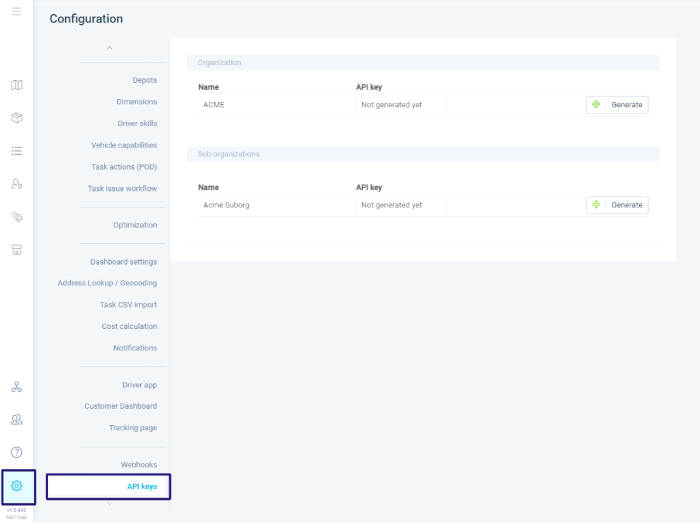
Step #4: Add the API key to the authentication header.

You can now start using eLogii with any other software.
24/7 Support
eLogii’s dev teams will support you throughout the integration process via scheduled calls.
Besides, our customer support team is available 24/7.
How do we know this?
We ran a little experiment.
We wrote a question about delivery tracking and got immediately notified by the AI-bot:
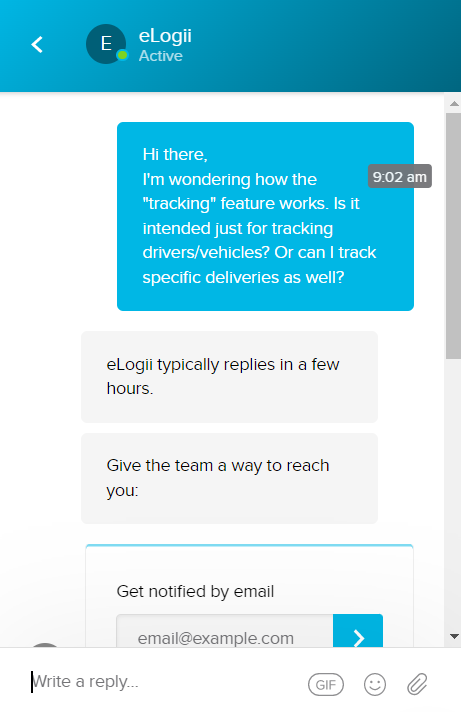
22 minutes later, our colleagues came back to us with a reply:

22 minutes is REALLY fast! Still, we did reach out to them at the start of their shift and from the same time zone. But they typically do answer queries within a few hours even if that’s not the case.